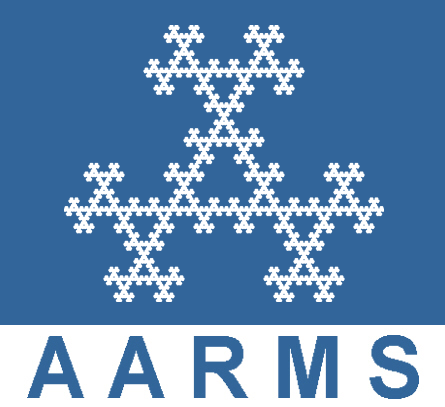2017 CMS Winter Meeting
Waterloo, December 8 - 11, 2017
Arithmetic Dynamics
Org: Jason Bell (University of Waterloo) and Patrick Ingram (York University)
[PDF]
Org: Jason Bell (University of Waterloo) and Patrick Ingram (York University)
[PDF]
- ANDREW BRIDY, Texas A$\&$M University
Arboreal finite index for cubic polynomials [PDF]
-
Let $K$ be a global field of characteristic $0$. Let $f \in K[x]$ and $\beta \in K$, and set $K_n = K(f^{-n}(\beta))$. The projective limit of the groups Gal$(K_n/K)$ embeds in the automorphism group of an infinite rooted tree. A major problem in arithmetic dynamics is to find conditions that guarantee the index is finite; a complete answer would give a dynamical analogue of Serre's celebrated open image theorem. I solve the finite index problem for cubic polynomials over function fields by proving a complete list of necessary and sufficient conditions. For number fields, the proof of sufficiency is conditional on both the $abc$ conjecture and a form of Vojta's conjecture. This is joint work with Tom Tucker.
- GEORGE GRELL, University of Rochester
Galois Groups of Iterated Quadratic Rational Maps whose Critical Orbits Collide [PDF]
-
In 2013, Pink studied properties of an inverse limit of Galois groups of iterated quadratic rational maps with infinite postcritical orbits whose critical points eventually meet. We use the theory of ramification groups to give an explicit representation of the Galois groups after an arbitrary number of iterations. In certain cases we are able to use this to give an expression for the fixed point proportion of the standard group action on a binary rooted tree. We are also able to extend the main result to cubic polynomials with similar properties.
- KENNETH SCOTT JACOBS, Northwestern University
Minimal Resultants of Rational Maps [PDF]
-
Let $K$ be a non-Archimedean field. The minimal resultant of a rational map $f\in K(z)$ measures how far $f$ is from having potential good reduction over an extension of $K$. In this talk, we introduce a notion of minimal resultant for rational maps defined over the complex numbers. This allows us to construct a height function on the moduli space $\mathcal{M}_d$ of degree $d$ rational maps over number fields; we will discuss the possibility that this height function is comparable to a Weil height on $\mathcal{M}_d$.
- JAMIE JUUL, Amherst College
The arboreal Galois representation of a PCF cubic polynomial [PDF]
-
Let $K$ be a field, $f(x)$ a polynomial of degree $d >1$ with coefficients in $K$, and $a\in K$. The roots of the polynomials $f^n(x)-a$, which are the pre-images of $a$ under $f^n(x)$, have a natural structure as a $d$-ary rooted tree. We can study the action of the absolute Galois group of $K$ on this tree structure. For a generic polynomial, this will give the full automorphism group of the tree. However in certain cases, such as when the polynomial is post-critically finite, this representation is known to have infinite index. In this talk, we will give a complete description of this group for the polynomial $f(x)=-2x^3+3x^2$ and base point $a= 3$ over the rational numbers. This is joint work with Rob Benedetto, Xander Faber, Ben Hutz, and Yu Yasufuku.
- MARIE-ANDREE B LANGLOIS, Dalhousie University
Constructing bases for homogenous three variable integer valued polynomials [PDF]
-
A polynomial over $\mathbb{Q}[x,y,z]$ is integer valued if $f(x,y,z)\in \mathbb{Z}$, whenever $x,y,z$ are integers. This talk will look at the case of $f$ being homogeneous and try constructing polynomials such that the denominators are divisible by the highest prime power possible. This will be achieved by forcing one of the variables to be evaluated at odd values only, and taking the intersection of those sets.
- NICOLE LOOPER, Northwestern University
A lower bound on the canonical height for polynomials [PDF]
-
Let $K$ be a number field. The canonical height function $\hat{h}_\phi$ associated to a rational function $\phi:\mathbb{P}^1(K)\to\mathbb{P}^1(K)$ measures arithmetic information about the forward orbits of points under $\phi$. Silverman conjectured that for a given number field $K$ and $d\ge 2$, there exist constants $\kappa_1>0$ and $\kappa_2$ such that for all degree $d$ rational maps $\phi\in K(z)$ and all $\alpha\in K$, either $\alpha$ is preperiodic under $\phi$, or $\hat{h}_\phi(\alpha)\ge\kappa_1h_{\mathcal{M}_d}(\phi)+\kappa_2$, where $h_{\mathcal{M}_d}$ is a height on the moduli space $\mathcal{M}_d$ of degree $d$ rational functions. We will discuss a proof of such a uniform lower bound across large classes of polynomials.
- MYRTO MAVRAKI, University of British Columbia
Dynamics and small points in families of elliptic curves [PDF]
-
After describing Bogomolov's Conjecture (now a theorem following work of Zhang and Ullmo), I will give an analogous result in the setting of families of products of elliptic curves. Our work may be seen as a Bogomolov-type extension of theorems by Masser and Zannier in the theme of unlikely intersections. Key ingredients in our proof are Silverman's results on the variation of heights in elliptic families and an equidistribution theorem of Thuillier's along with complex-dynamical arguments. This is joint work with Laura DeMarco.
- ALICE MEDVEDEV, The City College of New York, CUNY
Upper-triangular polynomial dynamical systems. [PDF]
-
For an upper-triangular polynomial dynamical system like
$F(x_1, x_2) = (f_1(x_1), f_2(x_1, x_2))$,
vertical lines $x_1 = a$ are invariant only when $f_1(a) =a$ is a fixed point of $f_1$. These finitely many lines don't give much information about the whole system. On the other hand, over a sufficiently large difference field $(L, \sigma)$, there are infinitely many solutions of $f_1(a) = \sigma(a)$, and the corresponding lines $x_1 =a$ are \emph{skew-invariant}. This allows us to leverage our previous work on coordinate-wise polynomial dynamics. This is joint work with Thomas Scanlon.
- KHOA NGUYEN, University of Calgary
The orbit intersection problem for linear spaces and semiabelian varieties [PDF]
-
We will introduce the Dynamical Mordell-Lang problem by Ghioca and Tucker. After that,
we explain the ``orbit intersection problem'' for linear spaces and semiabelian
varieties. This is joint work with Ghioca.





